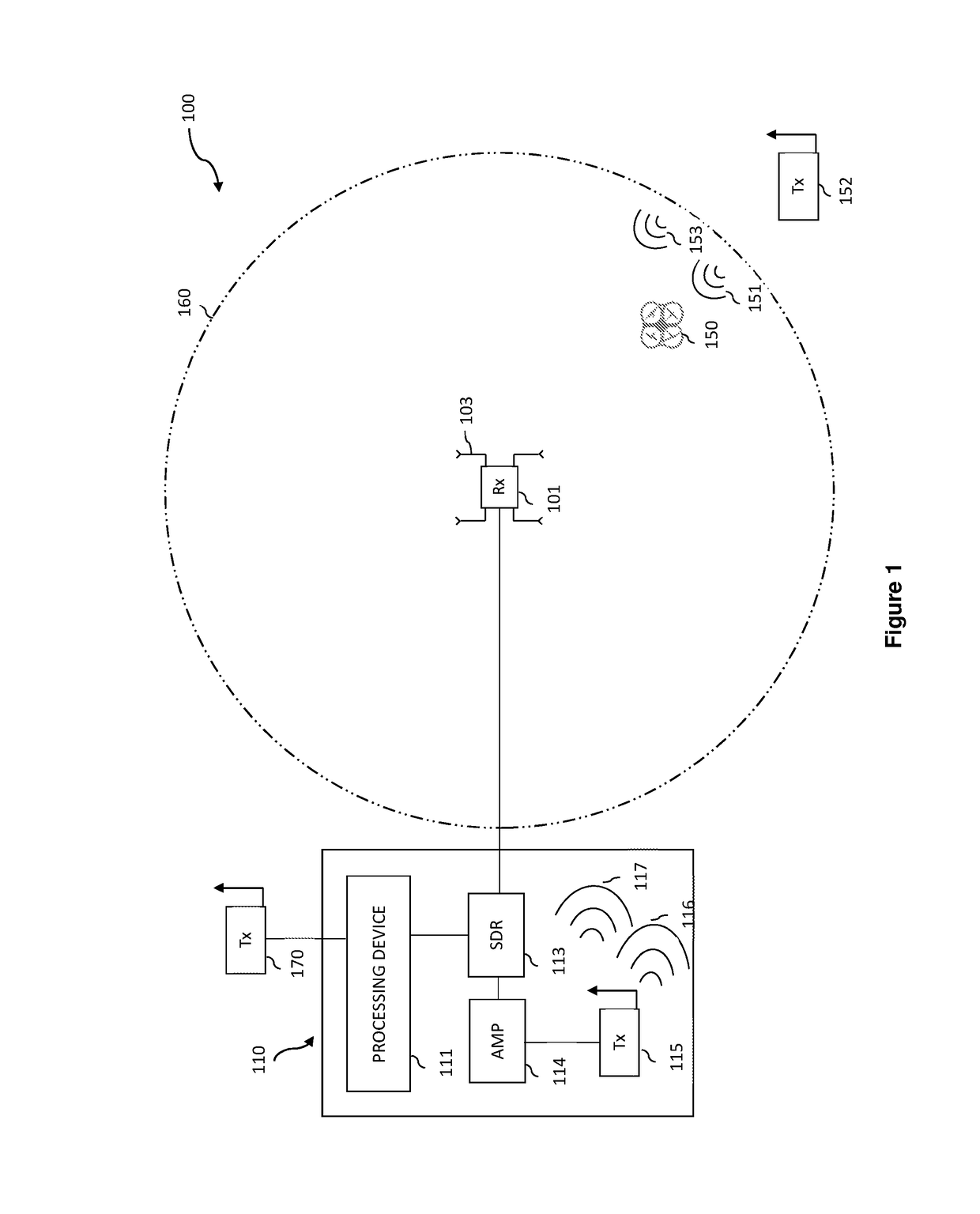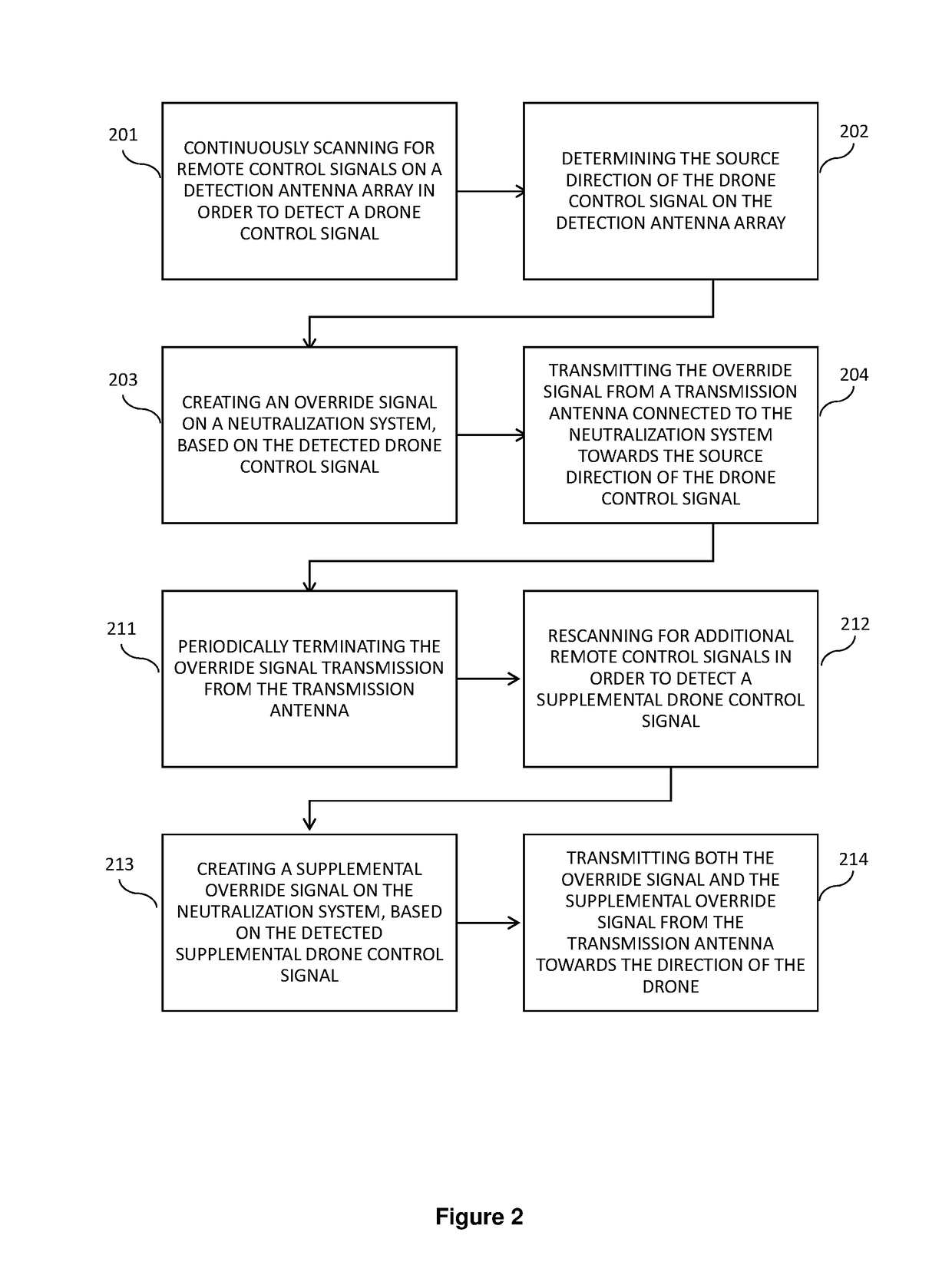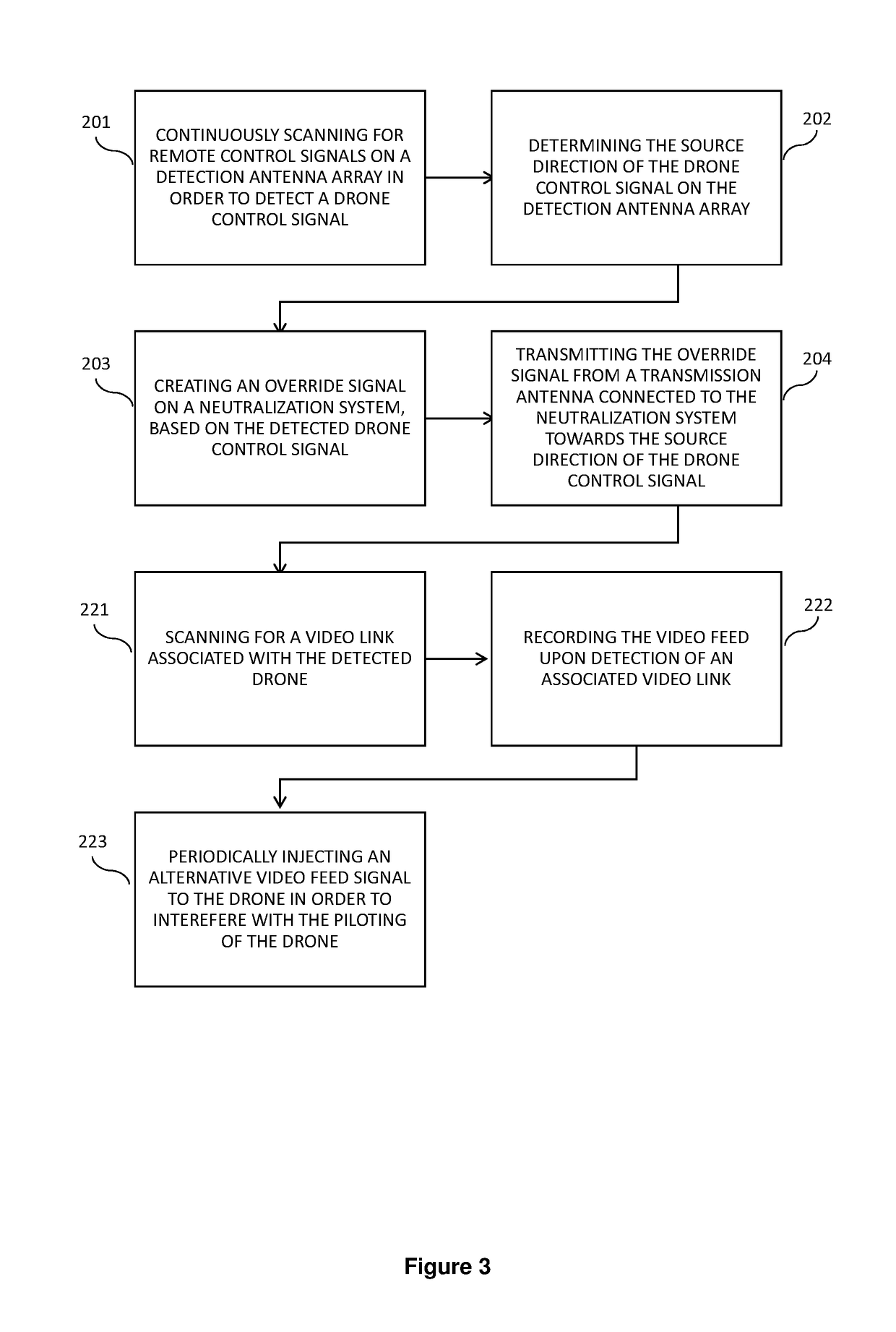System and method for detecting and defeating a drone
a technology of drones and systems, applied in direction finders using radio waves, process and machine control, instruments, etc., can solve problems such as unparallel flexibility and convenience, and achieve the effects of reducing interference risk, speeding up the detection process, and high energy conversion efficiency
- Summary
- Abstract
- Description
- Claims
- Application Information
AI Technical Summary
Benefits of technology
Problems solved by technology
Method used
Image
Examples
Embodiment Construction
[0054]As shown in the accompanying drawings, the present invention is generally directed to a system and method for detecting and defeating a drone. More particularly, FIG. 1 illustrates a system 100 for detecting and defeating a drone 150. The system 100 generally includes a detection antenna array 101. The detection antenna array 101 generally is a set of two or more antennas and installed in various geometric arrays. In fact, in one of the preferred embodiments, the detection antenna array 101 includes a set of four 90-degree sector antennas 103. So then, each of the sector antennas 103 further comprises an antenna gain (not shown). The antenna gain is the ratio of the power required at the input of a loss-free reference antenna to the power supplied to the input of the given antenna to produce, in a given direction, the same field strength at the same distance. Given this, the antenna gain can be selected from a group of ranges in decibels (dB). The preferred ranges of the anten...
PUM
 Login to View More
Login to View More Abstract
Description
Claims
Application Information
 Login to View More
Login to View More - R&D
- Intellectual Property
- Life Sciences
- Materials
- Tech Scout
- Unparalleled Data Quality
- Higher Quality Content
- 60% Fewer Hallucinations
Browse by: Latest US Patents, China's latest patents, Technical Efficacy Thesaurus, Application Domain, Technology Topic, Popular Technical Reports.
© 2025 PatSnap. All rights reserved.Legal|Privacy policy|Modern Slavery Act Transparency Statement|Sitemap|About US| Contact US: help@patsnap.com



